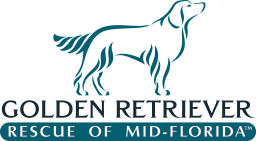We share our homes with another species of animal, whose most dangerous feature is its teeth .....
Please remember this information does not replace proper vet care.
…yet most of us know little or nothing about those teeth, other than the fact that we should probably be brushing them. It’s time to correct this situation.
First, some canine dental basics. Most animals (including humans) have teeth that reflect the diet they subsisted on as they evolved. Though we humans have a few mildly sharp teeth in the front of our mouths that we can use for tearing, most of our teeth are built for grinding plant-based foods so that we can better digest them. Conversely, most of the teeth in a dog’s mouth are built for tearing animal-based foods, with just a few teeth that crush their food before they swallow it.
Brushed Off
Here’s what most dog owners really want to know about their dogs’ teeth: “Do I really have to brush them?”
Although veterinary dental specialists would prefer that all owners brush their dogs’ teeth, the fact is that some dogs need it more than others. Whether it’s due to their genes, diet, chewing habits, and/or the chemical composition of their saliva, some dogs go to their graves with clean, white teeth and healthy gums with absolutely no effort put forth by their owners. Others develop tartar (also known as calculus) at an alarming rate.
A Few Toothbrushing Tips:
– Start out slow, and be patient. Don’t try to brush all of your dog’s teeth on the first day. Use a circular motion, gently scrubbing plaque away from the gum line. Reward your dog frequently and richly with treats and praise.
– The “brushes” that you wear on your fingertips don’t tend to work as well as brushes with softer bristles – and they make it much easier for your dog to accidently bite down on your finger. Look for very soft-bristled brushes with long handles, so you can make sure you reach the molars. For larger dogs, soft brushes meant for adult humans work fine; baby human toothbrushes work well for smaller dogs.
– If your dog will tolerate it (or you can positively and patiently teach him to accept it), electric toothbrushes work great! For some dogs, however, these whirring, vibrating brushes are a deal-breaker, no matter what kind of treats you offer.
– Use a toothpaste designed for dogs. They come in flavors that are meant to appeal to dogs (meaty, not minty) – and they are free of fluoride, which can be toxic to dogs. (Remember, dogs don’t know to spit the toothpaste out!) Look for products that contain antibacterial enzymes, which help discourage bacterial growth and resulting gingivitis.
– Dip the brush in water frequently as you brush, to help rinse the plaque away from your dog’s teeth, and to facilitate a thorough application of the antibacterial enzymes in the toothpaste.
Get to a Veterinarian
It can be painfully expensive, but the value of having your dog’s calculus-encrusted teeth cleaned at your veterinarian’s office is incalculable! The only way all of his teeth (even the molars) can be scrubbed completely of the tartar, above and below the gums, is under general anesthesia. This must be done at a veterinary clinic.
What about “anesthesia-free” cleaning? Witnessing a veterinary cleaning, with the dog under anesthesia, is pretty much all you need to realize that no one is capable of doing what needs to be done to get a fully conscious dog’s teeth really clean. The most cooperative dog in the world just isn’t going to lie down on a table under necessarily super bright lights (so the technician can thoroughly examine the teeth for any signs of chips or painful fractures) and allow a vibrating, misting tool to be employed on his molars.
Finally, veterinarians can prescribe and dispense antibiotics to help your dog fight off any bacteria that was dislodged by the cleaning and absorbed into his bloodstream, as well as provide any sort of consultation or aftercare needed. The price tag of all of this can be large – and it can vary a lot from vet to vet, ranging from $400 to $1,400 (or even more if the dog requires tooth extractions).
After all this, you’ll probably be motivated to give that tooth brushing a try. Do it now, while you’re good and motivated; it could add years to your dog’s life.
Taken in part from Whole Dog Journal
